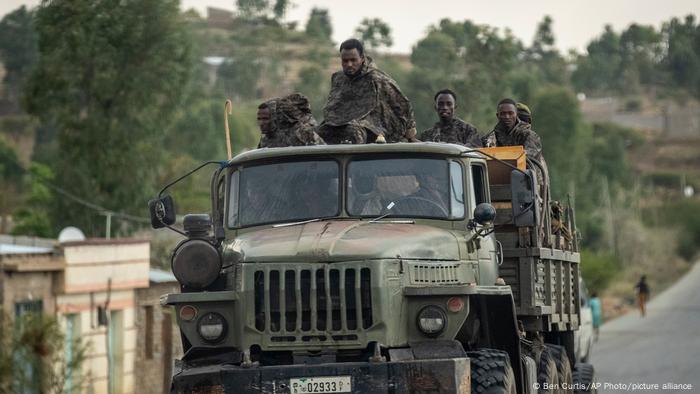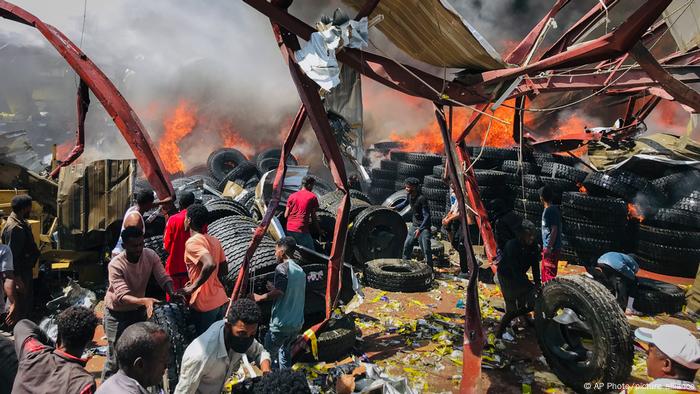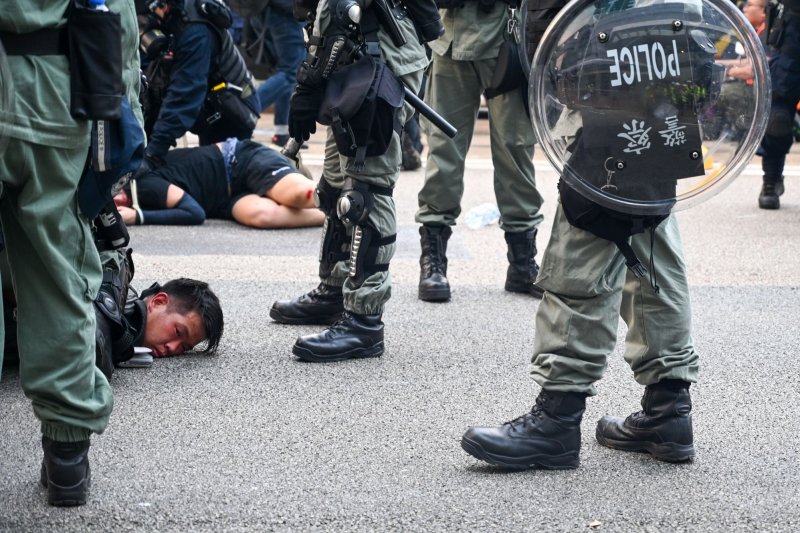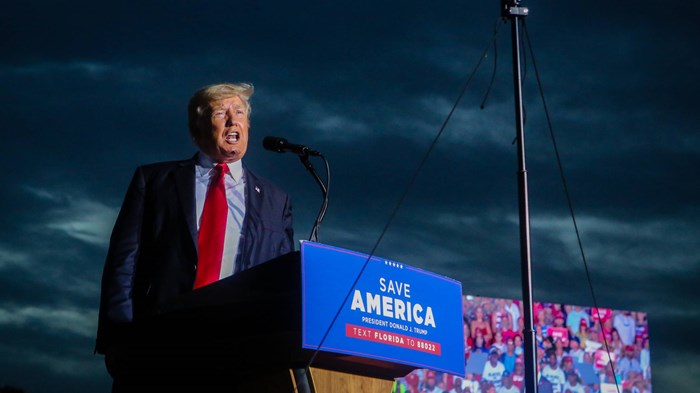Ethiopia compares Tigray forces to ‘rat’ as war marks 1 year

1 of 6
NAIROBI, Kenya (AP) — Ethiopia’s government marked a year of war by lashing out Thursday in response to international alarm about hate speech, comparing the rival Tigray forces to “a rat that strays far from its hole” and saying the country is close to “burying the evil forces.”
The statement from the government communication service, posted on social media and confirmed by a government spokesman, came amid urgent new efforts to calm the escalating war as a U.S. special envoy arrived and the president of neighboring Kenya and others called for an immediate cease-fire.
The war that has killed thousands of people and displaced millions since November 2020 threatens to engulf Ethiopia’s capital, Addis Ababa. Tigray forces seized key cities in recent days and linked up with another armed group, leading the government of Africa’s second-most populous country to declare a national state of emergency with sweeping detention powers.
The spokeswoman for Prime Minister Abiy Ahmed, Billene Seyoum, did not say whether Abiy was meeting with U.S. special envoy Jeffrey Feltman, who this week insisted that “there are many, many ways to initiate discreet talks” toward peace.
United Nations Secretary-General Antonio Guterres has said he spoke with Abiy “to offer my good offices to create the conditions for a dialogue so the fighting stops.” Uganda’s president called for a meeting of East African leaders, and the European Union warned of “fragmentation and widespread armed conflict.”
But so far, such efforts have failed. Last week a congressional aide told The Associated Press that “there have been talks of talks with officials, but when it gets to the Abiy level and the senior (Tigray forces) level, the demands are wide, and Abiy doesn’t want to talk.”
Instead, the prime minister has urged citizens to rise up and “bury” the Tigray forces who long dominated the national government before he came to power. On Wednesday, Facebook said it had removed a post by Abiy with that language, saying it violated policies against inciting violence. It was a rare action against a head of state or government.
The government statement on Thursday took aim not only at Facebook, accusing it of showing its “true colors,” but also at media, humanitarian groups and others allegedly “working hand in hand with the enemy in propagating its false narrative.” It warned it would take action over “destructive behavior.”
But Ethiopia’s government aimed its harshest language at the Tigray forces. “TPLF and its puppets are being encircled by our forces. As the saying goes, ‘a rat that strays far from its hole is nearer to death,’” the statement said, referring to the Tigray People’s Liberation Front.
The U.N. special adviser on the prevention of genocide, Alice Wairimu Nderitu, told an online event Thursday that dehumanizing speech in Ethiopia is “of extreme concern,” and she warned that the risk exists of the war spilling across borders and “becoming something completely unmanageable.” She warned that ethnic-based militias are “so dangerous in this context.”
Kenya increased security along its borders amid fears of a wave of Ethiopians fleeing as one of the world’s worst humanitarian crises spreads, while its foreign ministry said statements inciting ordinary citizens into the conflict “must be shunned.”
Tigray forces spokesman Getachew Reda claimed they had “joined hands” with another armed group, the Oromo Liberation Army, to seize the city of Kemisse, which is even closer to the capital.
“Joint operations will continue in the days and weeks ahead,” he tweeted.
A security source confirmed that the two armed groups had linked up to control Kemisse and said Tigray forces were pushing east as well as south toward the capital. The source spoke on condition of anonymity because they were not authorized to speak to journalists.
All sides in the war have committed abuses, a joint U.N. human rights investigation said Wednesday, while millions of people in the government-blockaded Tigray region are no longer able to receive humanitarian aid. The U.N. says no aid has entered Tigray since Ethiopian military airstrikes resumed there on Oct. 18, and 80% of essential medication is no longer available.
The Tigray forces say they are pressuring the government to end the blockade, but the spreading insecurity as they push south through the neighboring Amhara region has hampered aid delivery to hundreds of thousands of hungry people.
A university staffer who fled the Amhara town of Woldiya before Tigray forces arrived weeks ago said friends who stayed were climbing nearby hillsides to call the outside world with reports of low food supplies and people drinking from rivers, while electricity is cut. There is no aid in the occupied areas, Alemayehu said, giving only his first name for his security.
“I wish the war ends before it moves to the capital, that’s my prayer to God,” he said, adding that he opposes the Tigray fighters.
With the government statements and the new state of emergency, ethnic Tigrayans in the capital told the AP they were hiding in their homes as authorities carried out house-to-house searches and stopped people on the streets to check identity cards, which everyone must now carry.
One lawyer, speaking on condition of anonymity for fear of retaliation, estimated that thousands have been detained this week, citing conversations with “many people from the four corners of the city.” He said Tigrayan lawyers like him were powerless to help because of their ethnicity.
“Our only hope now is the (Tigray forces),” said one young woman, Rahel, whose husband was detained on Tuesday while going to work as a merchant but has not been charged. “They might not save us, to be honest. I’ve already given up on my life, but if our families can be saved, I think that’s enough.”
Another Tigrayan, Yared, said his brother, a businessman, was detained on Monday, and when he went to the police station, he saw dozens of other Tigrayans.
“It’s crazy, my friends in Addis, non-Tigrayans, are calling me and telling me not to leave the house,” Yared said.
“They go through your phone, and if you have some material about the Tigray war that would be suggesting supporting the war, they would just detain you,” he said. “The past four days have been the worst by far, the scope at which they’re detaining people, it’s just terrorizing. We don’t feel safe in our homes anymore.”
Issued on: 04/11/2021
Text by :NEWS WIRES
African and Western nations called for an immediate ceasefire in Ethiopia on Thursday after Tigrayan forces from the country's north made advances towards the capital this week.
The U.S. special envoy for the Horn of Africa, Jeffrey Feltman, arrived in Addis Ababa to press for a halt to military operations and a start to ceasefire talks.
African Union Commission Chair Moussa Faki Mahamat said he met Feltman to discuss efforts towards dialogue and political solutions to the conflict, which pits the central government against the Tigray People's Liberation Front (TPLF) and its allies.
The European Union and the East African bloc the Intergovernmental Authority on Development (IGAD) joined the chorus of bodies calling for a ceasefire. Ugandan President Yoweri Museveni announced an IGAD meeting on Nov. 16 to discuss the war.
Kenyan President Uhuru Kenyatta urged the rival parties to lay down their arms and find a path to peace.
"The fighting must stop!," he said in a statement.
Abiy's government declared a state of emergency on Tuesday as the Tigrayan forces threatened to push forward to Addis Ababa.
TPLF spokesman Getachew Reda said on Wednesday TPLF troops were in the town of Kemise in Amhara state, 325 km (200 miles) from the capital.
The U.S. Embassy in Addis Ababa authorised the voluntary departure of some staff and family members because of the intensifying hostilities. Washington said on Wednesday it was "gravely concerned" about the situation and called for a halt to military operations and ceasefire talks.
The year-long conflict has killed thousands of people, forced more than two million more from their homes, and left 400,000 people in Tigray facing famine.
The United States, the European Union and the United Nations said that an end to a de facto government blockade in Tigray is needed to avert a large-scale famine.
No humanitarian convoys have entered Tigray since Oct. 18 and no fuel has entered to aid the humanitarian response since early August, according to the United Nations.
Streets and shops in Addis Ababa, a city of around five million people, were busy as usual on Thursday morning, though some residents said there was a feeling of uneasy calm.
"There are rumors about the approach of the rebels. People debate about the conflict, most of the people accuse the government for what happened," said one man, who spoke on condition of anonymity.
Police had arrested "many people" in Addis Ababa since the government declared the state of emergency, police spokesperson Fasika Fanta said on Thursday.
Residents told Reuters on Wednesday many Tigrayans had been arrested but Fasika said arrests were not based on ethnicity.
"We are only arresting those who are directly or indirectly supporting the illegal terrorist group," he said. "This includes moral, financial and propaganda support."
He also said many people were registering weapons at police stations around the city in line with a government directive issued on Tuesday for people to prepare to defend their neighbourhoods.
"Some are even coming with bombs and heavy weapons. We are registering those too," he said.
Government spokesperson Legesse Tulu did not respond to requests for comment.
The conflict started last November when forces loyal to the TPLF, including some soldiers, seized military bases in Tigray. In response, Abiy sent more troops to the northern region.
The TPLF had dominated national politics for nearly three decades but lost much influence when Abiy took office in 2018.
The TPLF then accused him of centralising power at the expense of Ethiopia's regional states - an accusation Abiy denies.
The Tigrayan forces and their Oromo allies have made significant advances in the past week. Spokesman Getachew on Wednesday pledged to minimise casualties in their drive to take Addis Ababa.
"We don't intend to shoot at civilians and we don't want bloodshed. If possible we would like the process to be peaceful," he said.
A regional analyst, who spoke on condition of anonymity, said the TPLF was likely to hold off on any advance on Addis Ababa until they secured the highway running from neighbouring Djibouti to the capital.
That requires seizing the town of Mille, in Afar region. Getachew said on Tuesday that Tigrayan forces were closing in on Mille.
Ethiopian military spokesman Colonel Getnet Adane and an Afar regional government spokesperson did not respond to requests for comment.
Abiy's spokesperson, Billene Seyoum, accused the international media of being "overly alarmist" in its coverage of Ethiopia.
"Perpetuating terrorist propaganda as truth from offices far off and detached from the ground is highly unethical," she said in a tweet.
(REUTERS)
Two years after Ethiopian Prime Minister Abiy Ahmed was awarded the Nobel Peace Prize, his country is engulfed in a war with the potential to destabilize the whole region for decades to come, says DW's Ludger Schadomsky.

The Ethiopian conflict threatens to destabilize the entire region
Jeffrey Feltman's visit to Ethiopia is the West's last, desperate attempt to rescue the tottering country. The US special envoy to the Horn of Africa will try to persuade Ethiopian Prime Minister Abiy Ahmed to agree to a cease-fire and peace talks. The hope is to bring an end to the war between the Ethiopian government and the Tigray People's Liberation Front (TPLF) before it descends on the Ethiopian capital, Addis Ababa.
The war, which has been going on for a year now, has long spilled out of Tigray and has devastated half of the country. Neighboring countries Sudan and Eritrea are involved, as well as other nations such as Iran, Turkey, the United Arab Emirates, Russia and China.

Ludger Schadomsky is head of DW's Amharic Service
The Horn of Africa is of particular geostrategic importance, and the conflict has the potential to destabilize the region for years, and possibly decades, to come. It is already driving a wedge through the international community and, once again, Beijing and Moscow are playing power games with their vetoes in the UN Security Council.
The fact that the prime minister, who was initially celebrated for his reforms, is now giving the cold shoulder to the US and the EU and looking eastwards is a bitter lesson for the terrifyingly naive decision-makers of the Old World who are writing up foreign and security policy.
Tragic end to 'Ethiopian Spring'
The bloody end to the "Ethiopian Spring" is tragic in many ways: Firstly, for the 110 million people who had hoped for a better future after the 2018 peace deal; and secondly because the economy, already battered by rampant inflation and the pandemic, will suffer from the burden of war for years. The vicious cycle of poverty and hunger will continue.
It's also tragic because it shows that even before the Afghanistan debacle has subsided, the country's partners in the West have failed miserably yet again. It was also grotesquely ill-advised of them to support the nomination of the supposed reformer for the Nobel Peace Prize. To recap — Abiy was nominated because of his peace agreement with Eritrea. The same Eritrea whose soldiers would go on to carry out terrible human rights violations two years later on invitation from the laureate himself.
ETHIOPIA: TIGRAY CRISIS ONE YEAR ON
A city burns
Residents of Tigray's capital Mekele sift through wreckage following an airstrike by government forces on October 20. The military said it was targeting a weapons manufacturing facility operated by the Tigrayan People's Liberation Front (TPLF), which the rebel Tigray forces have denied.
123456789
The governments of the West were blinded by their eagerness to support reform. It was simply too tempting to support a young, charismatic prime minister who promised to bring peace and stability to Africa's second-most populous country and to stabilize the region.
But they woefully underestimated the dynamics of a country that boasts over 80 ethnic groups. A cursory glance at history would have sufficed to understand that the deep rivalry between the Oromo, the Amhara and the Tigrayans could not be plastered over with gestures and symbolic politics. The fact that the African Union, whose headquarters is in Addis Ababa, has once again failed to live up to its promise of offering "African solutions to African problems" goes without saying.
National dialogue is crucial
Of course, it would be too easy to blame the international community for the latest failed reforms. Ethiopia has a culture of deep-seated mistrust, and an incompetent and ethnocentric political caste stifles even the most modest attempts at democratization. Anyone who has heard Ethiopian intellectuals express astonishment at German coalition talks knows it will take generations before a culture of political compromise can establish itself here. Civil society is still very weak in this post-authoritarian country, which is essentially a powder keg that can be easily ignited by saboteurs. Ethnic hatred, for instance, is rampant on social media.
As an alliance of convenience between Tigrayans and Oromo marches on the capital, it would be presumptuous to predict any future power constellations. However, what can be said is that if there is not a serious national dialogue involving all relevant powers — important religious leaders and traditional authorities, jailed opposition politicians and actors of civil society — it will be difficult to halt the Balkanization of Ethiopia.
The choice to award the Nobel Peace Prize to Abiy Ahmed, a man who started out as a dynamic reformer and charming mediator but is today indulging in threats of war and conscripting civilians for the last stand, will go down in history as one of the Nobel Committee's worst decisions — and it has made many notoriously bad decisions over the years.
And the former ruling TPLF clique, which controlled politics, the economy and the military in Ethiopia for over a quarter of a century, could soon be back in the fold. This will particularly please nostalgic, Western-based experts who like to praise the discipline and morals of the former guerrilla movement. The majority of the Ethiopian population, on the other hand, will surely have very mixed feelings.
The Ethiopian Tourism Commission promotes the country as one with "13 months of sunshine." Abiy Ahmed's own sunshine policy has failed miserably. When will the next political spring arrive? Nobody can make any serious predictions. For now, it is a question of avoiding more bloodshed and a storm on Addis Ababa.
This article has been translated from German









